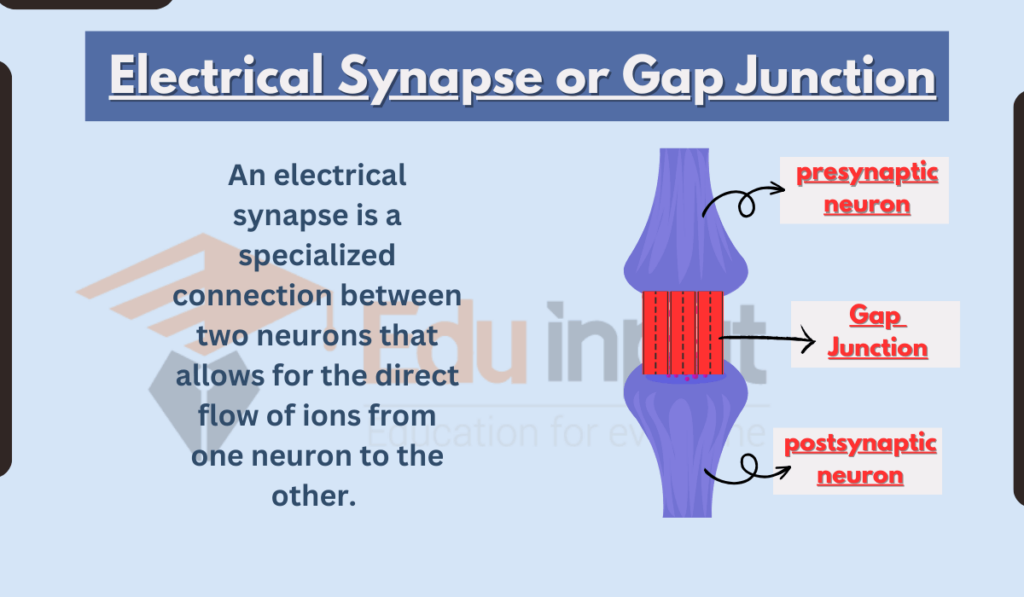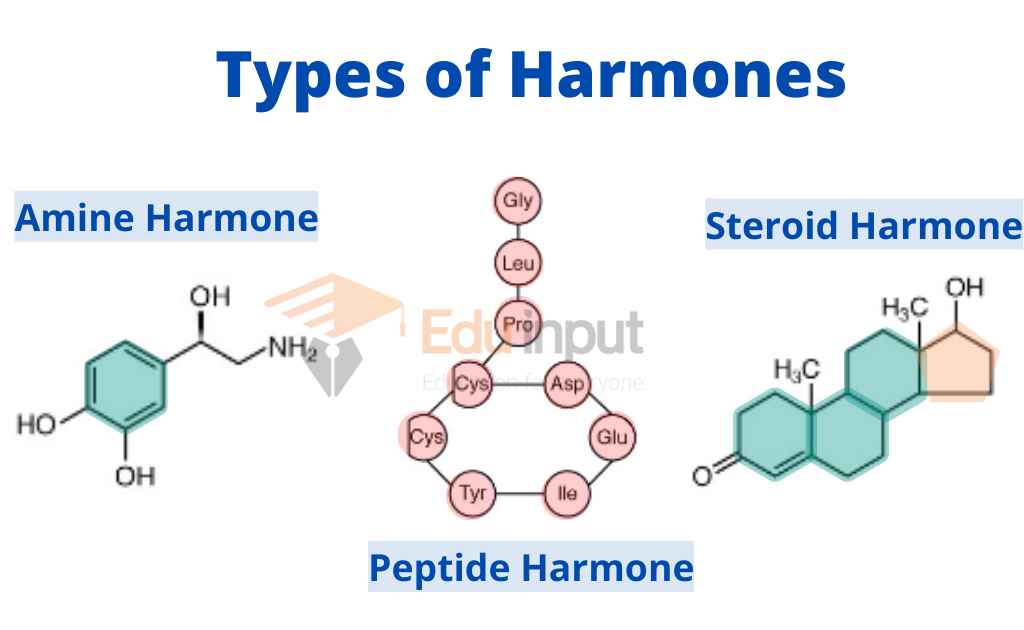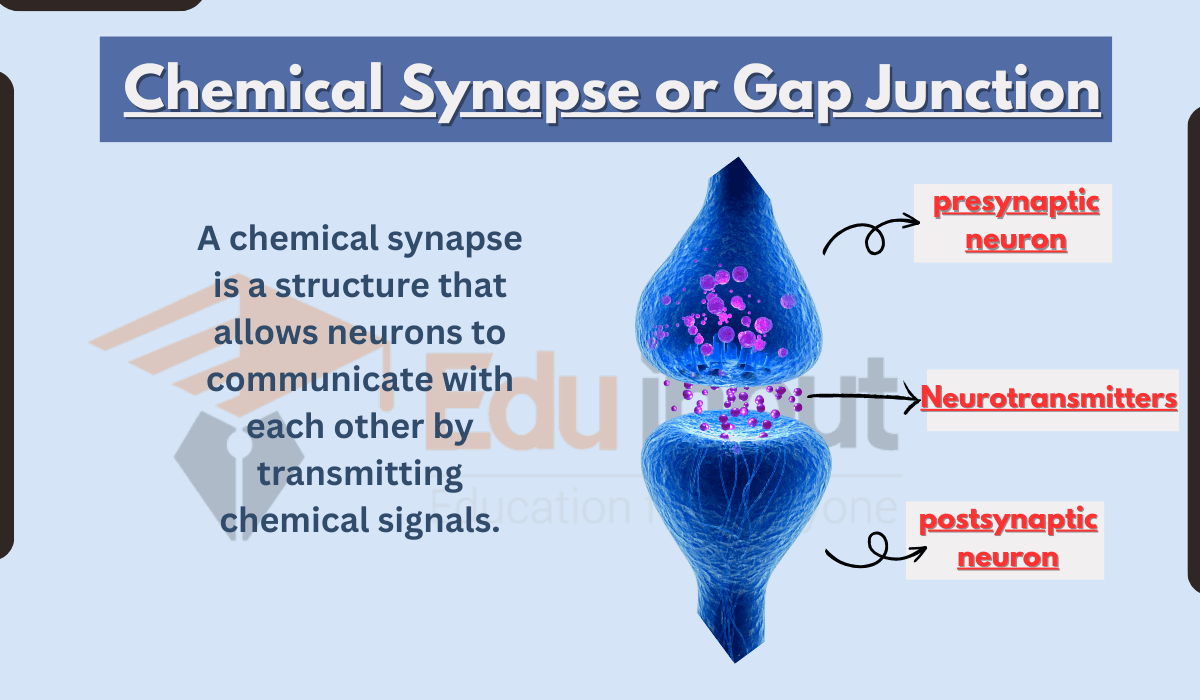Electrical Synapse-Steps, Types, Examples, Functions, and Advantages
Definition of Electrical Synapse
An electrical synapse is a specialized connection between two neurons that allows for the direct flow of ions from one neuron to the other. This is a type of synapse that is in contrast to a chemical synapse, where the signal is transmitted by neurotransmitters.
The input to an electrical synapse can be from another neuron or from a sensory receptor.

Steps in Electrical Synapse Transmission
Here are the steps involved in electrical synapse transmission:
- An action potential is generated in the presynaptic neuron.
- This action potential opens voltage-gated sodium channels in the presynaptic membrane.
- Sodium ions flow into the presynaptic neuron, depolarizing the membrane.
- This depolarization opens voltage-gated calcium channels.
- Calcium ions flow into the presynaptic neuron, triggering the release of neurotransmitters.
- The neurotransmitters bind to receptors on the postsynaptic membrane.
- This binding opens ion channels in the postsynaptic membrane, allowing ions to flow.
- The flow of ions depolarizes the postsynaptic membrane.
- If the depolarization is strong enough, an action potential is generated in the postsynaptic neuron.
Types of Electrical Synapses
There are two main types of electrical synapses:
1. Gap Junctions
These are the most common type of electrical synapse. They are formed by connexons, which are protein channels that allow ions to flow between cells.
2. Hemichannel
These are channels that are only found in one of the two cells that make up the synapse. They allow ions to flow from the cell that contains the hemichannel to the other cell.
Role of Neurotransmitter at An Electrical Synapse
There is no role for neurotransmitters at an electrical synapse. The signal is transmitted directly by the flow of ions.
Example of Electrical Synapse
The neuromuscular junction is an example of an electrical synapse. This is the connection between a motor neuron and a muscle cell.
Function of Electrical Synapses
Electrical synapses are used for a variety of purposes, including:
1. Fast transmission of signals
Electrical synapses transmit signals much faster than chemical synapses. This makes them ideal for neural systems that require rapid responses, such as the reflex arc.
2. Synaptic integration
Electrical synapses can be used to integrate signals from multiple neurons. This allows the nervous system to create more complex and nuanced responses.
3. Synchronization of neuronal activity
Electrical synapses can be used to synchronize the activity of neurons. This is important for functions such as brain waves and muscle contractions.
Purpose of Electrical Synapse
The purpose of an electrical synapse is to transmit signals between neurons quickly and efficiently. This is important for neural systems that require rapid responses, such as the reflex arc.
Advantage of Electrical Synapse
The main advantage of electrical synapses is that they transmit signals very quickly. This is because the signal does not have to be converted into a chemical and then back into an electrical signal.
Width of Electrical Synapse
The width of an electrical synapse is very small, typically only a few nanometers. This is because the gap junction is a very narrow channel.
How Are Electrical Impulses Transmitted Across a Synapse?
Electrical impulses are transmitted across an electrical synapse by the flow of ions. When an action potential is generated in the presynaptic neuron, it opens voltage-gated sodium channels in the presynaptic membrane.
This allows sodium ions to flow into the cell, depolarizing the membrane. The depolarization opens voltage-gated calcium channels, which allow calcium ions to flow into the cell. The calcium ions trigger the release of neurotransmitters from the presynaptic neuron.
The neurotransmitters bind to receptors on the postsynaptic membrane, opening ion channels and depolarizing the membrane. If the depolarization is strong enough, an action potential is generated in the postsynaptic neuron.
Can Electrical Synapses Be Inhibitory?
Yes, electrical synapses can be inhibitory. In an inhibitory electrical synapse, the flow of ions from the presynaptic neuron to the postsynaptic neuron hyperpolarizes the postsynaptic membrane, making it more difficult to generate an action potential.
This is achieved by the flow of chloride ions into the postsynaptic neuron, which makes the membrane more negative. The hyperpolarization can be caused by the opening of chloride channels in the postsynaptic membrane or by the closing of potassium channels.
Inhibitory electrical synapses are found in a variety of brain regions, including the hippocampus, cerebellum, and cortex. They are thought to play a role in a variety of functions, including learning, memory, and motor control.
How To Measure Electrical Synapse?
There are a few ways to measure electrical synapses. One way is to use a technique called voltage-clamp recording. In voltage-clamp recording, a small current is applied to the cell to hold the membrane potential constant. This allows the researcher to measure the flow of ions through the channels in the membrane.
Another way to measure electrical synapses is to use a technique called dye coupling. In dye coupling, a dye that is fluorescent when excited by light is injected into one cell. If the cells are electrically coupled, the dye will spread to the other cell.
A third way to measure electrical synapses is to use a technique called electroporation. In electroporation, a brief electrical pulse is applied to the cell membrane. This pulse creates pores in the membrane, which allow ions to flow between the cells.

 written by
written by 



Leave a Reply